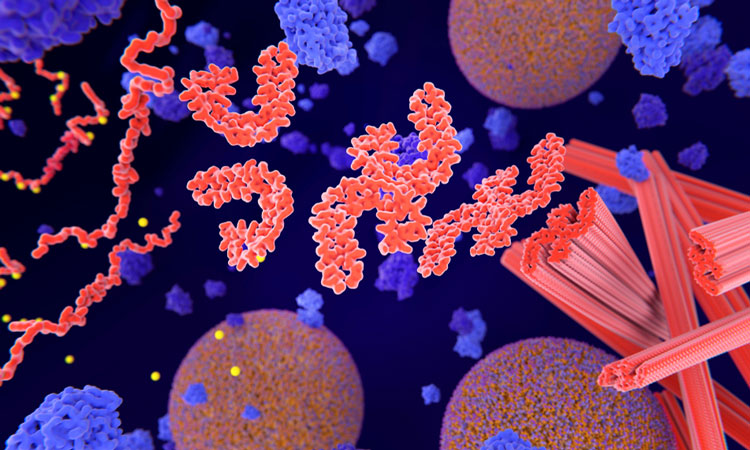Carbonic anhydrase inhibitors protect against tau protein build-up
Posted: 1 November 2024 | Drug Target Review | No comments yet
The glaucoma drug methazolamide removed tau build-up and lessened signs of dementia in genetically-engineered zebrafish and mice.


Scientists at the UK Dementia Research Institute, University of Cambridge, have identified a drug commonly used to treat glaucoma can protect against tau protein build-up in the brain in genetically engineered zebrafish and mice. They screened over 1,437 clinically-approved drug compounds and found that carbonic anhydrase inhibitors, of which the glaucoma drug methazolamide is one, remove tau build-up and lessen signs of dementia in zebrafish and mice with mutant forms of tau.
There has been little progress in discovering effective drugs to treat conditions where tau is either the primary disease driver, such as in progressive supranuclear palsy, or is a consequence of disease, like Alzheimer’s disease and chronic traumatic encephalopathy.
An option is to repurpose existing drugs, but drug screening normally takes place in cell cultures which do not recapitulate many characteristics of tau build-up in a living organism.
In the new study, the researchers used zebrafish models they had previously developed to overcome this. Zebrafish grow to maturity and are able to breed within two to three months, producing many offspring. The zebrafish were genetically manipulated to have tauopathy.
The team demonstrated that inhibiting the carbonic anhydrase enzyme, key for regulating acidity levels in cells helped the cell rid itself of the tau protein build-up by causing the lysosomes to move to the surface of the cell. Here, they fused with the cell membrane and disposed the tau.
Methazolamide was then tested on mice that had been genetically engineered to carry the P301S human disease-causing mutation in tau. They observed that those treated with the drug performed better at memory tasks and demonstrated better cognitive performance compared with untreated mice. The treated mice had fewer tau aggregates, and therefore a lesser reduction in brain cells.
Dr Farah Siddiqi, from the Cambridge Institute for Medical Research and the UK Dementia Research Institute, was joint first author with Dr Ana Lopez Ramirez. Siddiqi stated: “We were excited to see in our mouse studies that methazolamide reduces levels of tau in the brain and protects against its further build-up. This confirms what we had shown when screening carbonic anhydrase inhibitors using zebrafish models of tauopathies.”
Professor David Rubinsztein from the UK Dementia Research Institute and Cambridge Institute for Medical Research added: “Methazolamide shows promise as a much-needed drug to help prevent the build-up of dangerous tau proteins in the brain. Although we’ve only looked at its effects in zebrafish and mice, so it is still early days, we at least know about this drug’s safety profile in patients. This will enable us to move to clinical trials much faster than we might normally expect if we were starting from scratch with an unknown drug compound.”
Moving forward, the researchers aim to test methazolamide on different disease models, including more common diseases characterised by the build-up of aggregate-prone proteins, like Huntington’s and Parkinson’s diseases.
This study was published today in Nature Chemical Biology.



